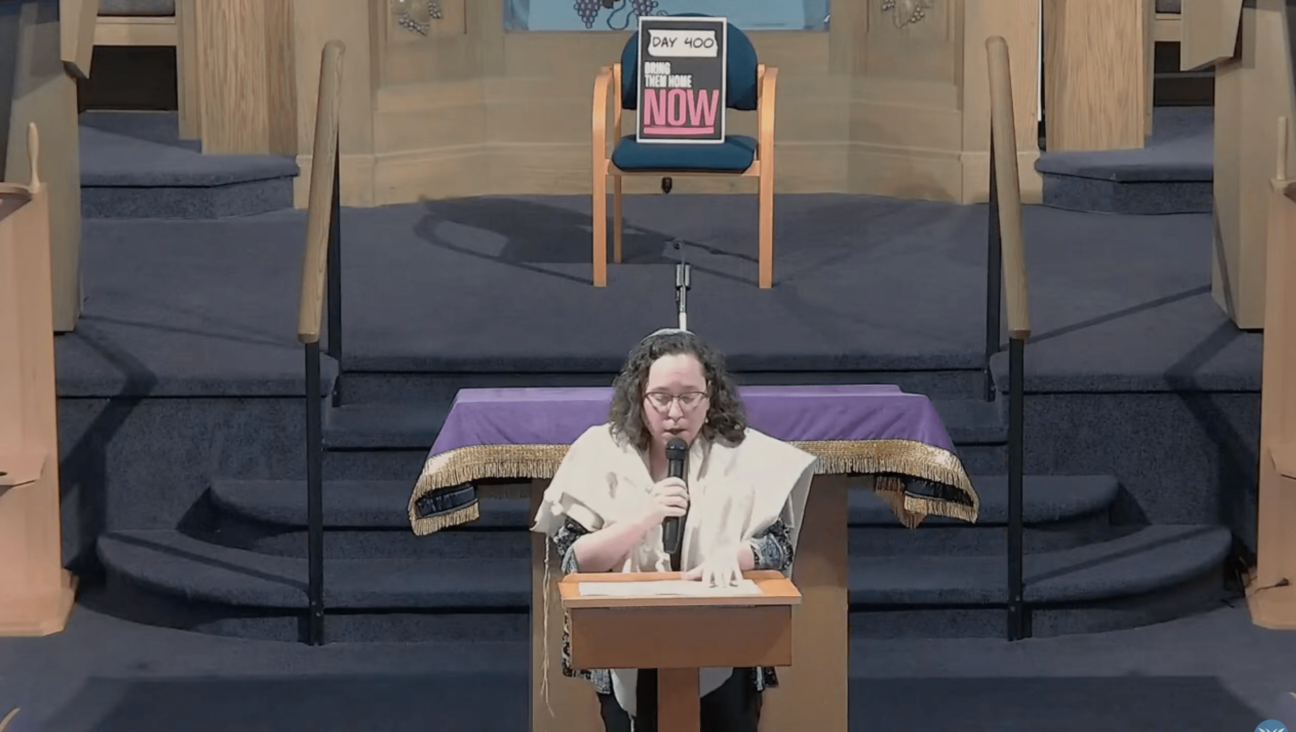Family Reunion At Home Plate
It turns out that the first version I heard had been embellished. Back in 1999, so the story was told to me, then Toronto and now Los Angeles Dodgers slugger Shawn Green came up to bat when one Jesse Levis was catching for the Cleveland Indians. (Levis spent nine relatively undistinguished years in the majors.) The umpire behind the plate was Al Clark, like Green and Levis, a Jew.
When it dawned on the three that this was, to put it mildly, an uncommon event — perhaps, even, the first time in the history of the world that home plate and its environs were populated exclusively by Jews — Clark proposed that they quietly recite the Shehecheyanu, and they did.
It’s a sweet story. What actually took place that day is not quite as sweet, but it is still worth noting: It was Green who first caught the coincidence, and who simply said, “Hello, Yids.” At which point they wished one another a happy new year, it being just a few days before Rosh Hashana.
(Green, incidentally but not coincidentally, is the official spokesman for Koreh LA, the very successful Los Angeles affiliate of the National Jewish Coalition for Literacy; Koreh LA has more than 1,200 volunteer tutors who help teach reading to kids in the early grades, mainly in inner-city schools.)
When I first heard the home-plate story a couple of weeks ago, I was reminded of one of the most memorable experiences in Jewish reunion I’d ever witnessed. I was in Cairo in 1978, just at the time the first peace conference between Israel and Egypt began. It was soon after Anwar Sadat’s bold visit to Jerusalem, and the excitement was near palpable.
On the Friday afternoon before the opening of the conference, but with the Israeli and American delegations already in town, as well as some 2,000 journalists sent to cover the event, the news quickly spread that there would be Shabbat services that evening at the long-since disused Adly Street Synagogue and that the Israeli delegation was planning to attend. Now, 25 years and so many roller-coasterish twists and turns, ups and downs later, it is hard to recapture the sense of anticipation that attended the matter. Israelis in Cairo? Peace?
No way I would miss it, so I got to the synagogue a solid half-hour on the early side, smiling to myself at the irony that was about to unfold: A large Israeli delegation was going to come to shul in Cairo, and for sure approximately none of them had lately — or not so lately — been to Shabbat services back home in the Holy Land. The pews filled up some — all the Israelis, some Jews from the American delegation, a handful of Cairene Jews — but as nearly as I can recall, it still felt like a rather derelict congregation.
In the rear of the shul were the journalists — in particular, videographers, but also, of course, the correspondents and the camera men, altogether many hundreds of them. No more than 10 minutes into the service, first one, then a couple more, finally 20 or 30 of the journalists put down the tools of their trade, placed handkerchiefs over their heads, and walked forward to join the congregation in prayer. Judaism had trumped profession. For these, some of whom I can confidently say had not been inside a synagogue since their bar mitzvah, it was a reunion with their people, their kin.
Reunion is, of course, an early theme in our tradition: think Isaac and Esau, think Joseph and his brothers. Perhaps the most popular article we ever published in Moment magazine during the 12 years I served as its editor was entitled “Pesach in Katmanwhere?” and described the very first pick-me-up Seder in Nepal. Two trekking Americans, knowing they’d be somewhere unlikely at Seder time, had packed a box of matzo. The Israeli embassy was all out of space but lent the couple six Haggadot, and in the days after they hung a notice of the Seder on the “notice tree” in downtown Katmandu, some 40 Jews signed up — including one who’d packed a bottle of kosher wine and a dozen or so young Jews from the Buddhist monastery up the hill.
When it was all over, the organizing couple sent us their chronicle of the event and we published it — little realizing that its theme of reunion would strike so powerful a chord that hundreds of families would read the article out loud as part of their next Seder, little imagining that Lubavitch chasidim would grab the initiative, providing all the necessary ingredients, from candles to matzo balls, and that the Seder would grow to number some 2,000 people — principally Israelis doing their customary post-army wandering — all protected by the Nepalese army.
Kinship’s awfully elemental, for all its complications. Maybe it works best in distant lands — and yes, home plate is scarcely less distant to Jews than Katmandu — or under special circumstances. Perhaps it is working in cyberspace. As nearly as I can tell, it cannot be organized, manipulated or exploited. It is just there. All we can do is whatever we can do to ensure that the stories get told and that, as is always the case with families, our children are taught that though they are not required to like their fellow Jews they are required to love them. And one more thing: If we accept that kinship is the default position that’s been factory-set, we ought see to it that the software programs that follow are as rich as can be. Sweet, in the end, is not enough.
Leonard Fein’s most recent book is “Against the Dying of the Light: A Father’s Story of Love, Loss, and Hope” (Jewish Lights, 2001).
A message from our CEO & publisher Rachel Fishman Feddersen

I hope you appreciated this article. Before you go, I’d like to ask you to please support the Forward’s award-winning, nonprofit journalism during this critical time.
At a time when other newsrooms are closing or cutting back, the Forward has removed its paywall and invested additional resources to report on the ground from Israel and around the U.S. on the impact of the war, rising antisemitism and polarized discourse.
Readers like you make it all possible. Support our work by becoming a Forward Member and connect with our journalism and your community.
— Rachel Fishman Feddersen, Publisher and CEO




















